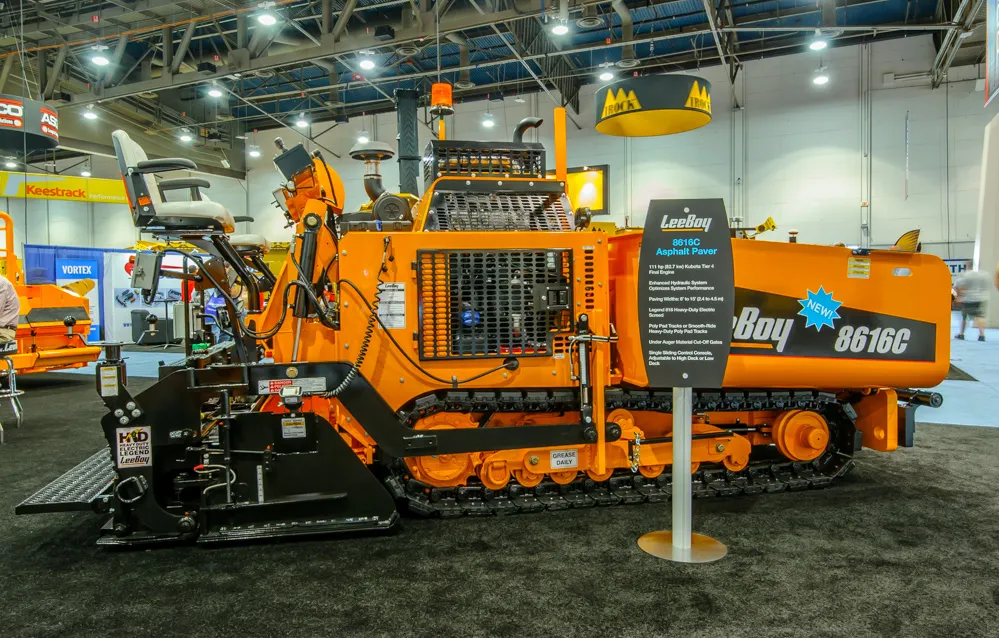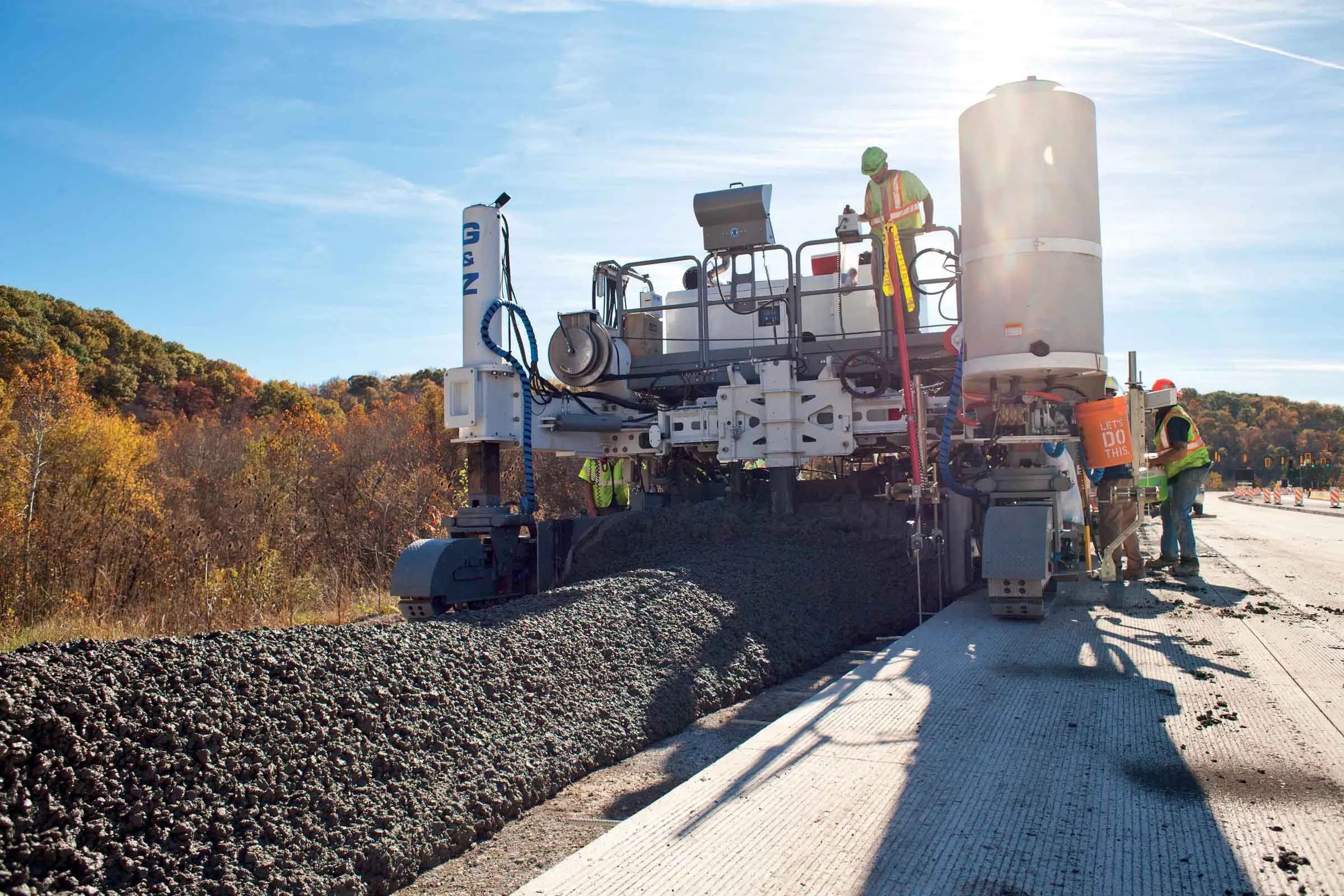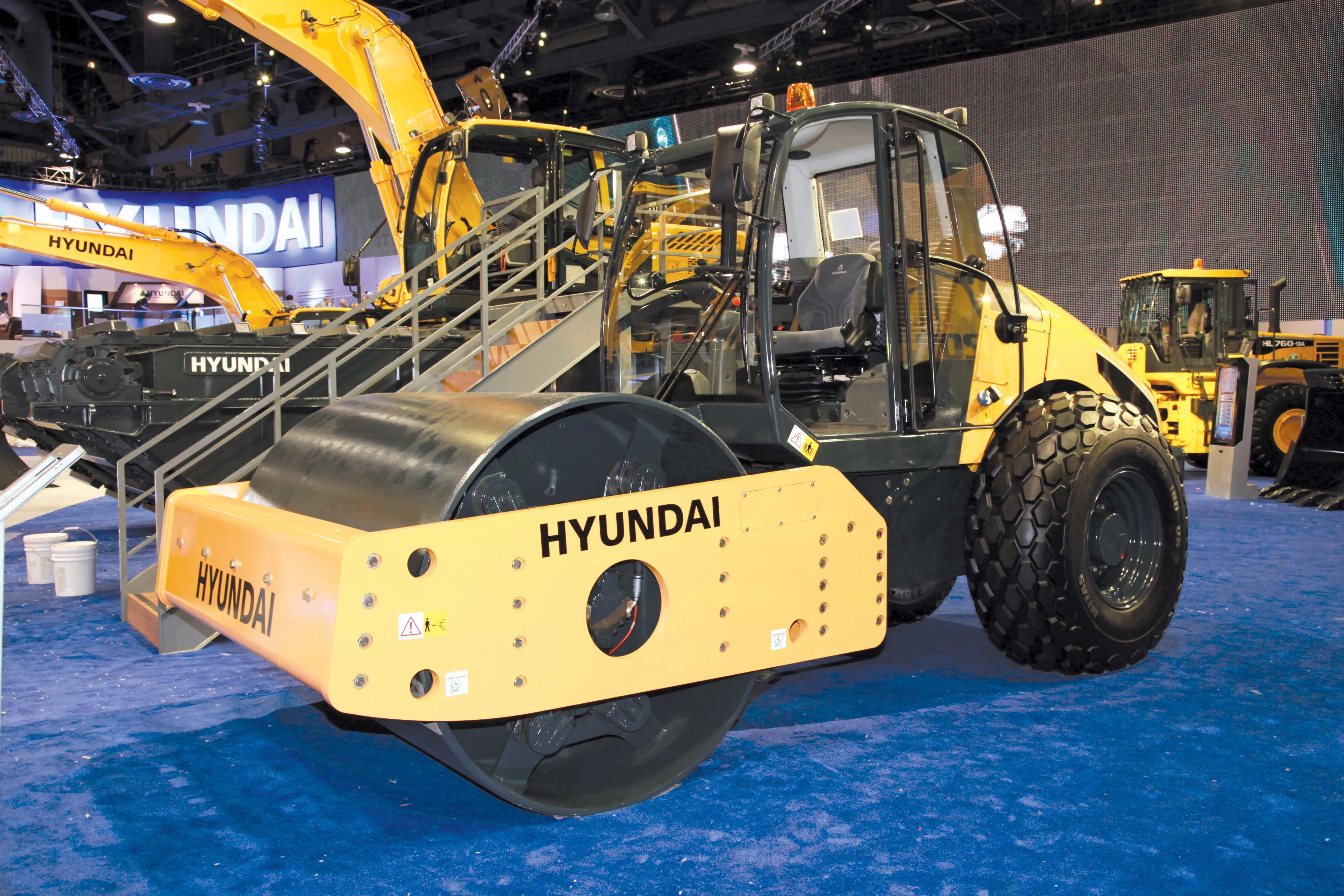
The machine has an 83kW diesel and is equipped with an electric heavy-duty Legend 815 screed offering paving widths from 2.4-4.5m, while it features a narrow conveyor hopper design.
The same revised control layout is fitted to the 8520E paver, with power from a 107kW Kubota diesel. The machine has a wide conveyor system that allows a steady material flow in tight paving conditions and is equipped with a heavy-duty Legend 815 screed offering paving widths from 2.4-4.5m.
A similar wide conveyor layout is fitted to the 8515E paver - which also benefits from the same type of screed and control system – and its engine has been lowered in the chassis by 127mm, improving all round visibility. The 6150 meanwhile is an upgrade of a former Blaw Knox design, with a Legend screed, added cut-offs and the same new controls as on the other machines in the line-up, as well as power from a 55kW Kubota diesel and the firm’s narrow hopper conveyor.








